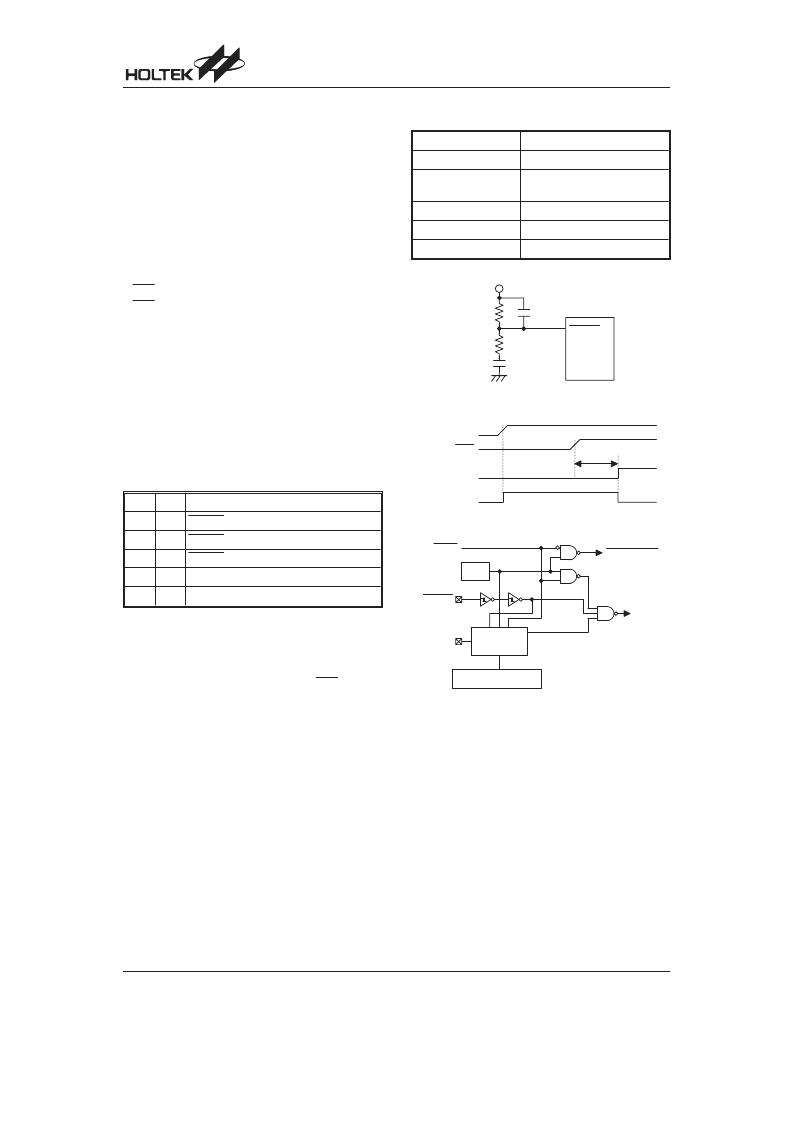- 您現(xiàn)在的位置:買賣IC網(wǎng) > PDF目錄385403 > HT82A851R (Holtek Semiconductor Inc.) USB Audio MCU PDF資料下載
參數(shù)資料
| 型號: | HT82A851R |
| 廠商: | Holtek Semiconductor Inc. |
| 英文描述: | USB Audio MCU |
| 中文描述: | USB音頻控制器 |
| 文件頁數(shù): | 12/43頁 |
| 文件大小: | 304K |
| 代理商: | HT82A851R |
第1頁第2頁第3頁第4頁第5頁第6頁第7頁第8頁第9頁第10頁第11頁當(dāng)前第12頁第13頁第14頁第15頁第16頁第17頁第18頁第19頁第20頁第21頁第22頁第23頁第24頁第25頁第26頁第27頁第28頁第29頁第30頁第31頁第32頁第33頁第34頁第35頁第36頁第37頁第38頁第39頁第40頁第41頁第42頁第43頁

HT82A851R
Rev. 1.20
12
June 15, 2007
interrupt acknowledge signal, the actual interrupt
subroutine execution will be delayed by one or more
cycles. If the wake-up results in the next instruction
execution, this will be executed immediately after the
dummy period is finished.
To minimise power consumption, all the I/O pins should
be carefully managed before entering the Power-down
mode.
Reset
Therearefourwaysinwhicharesetcanoccur:
RES reset during normal operation
RES reset during HALT
WDT time-out reset during normal operation
USB reset
The
WDT
time-out during HALT is different from other
chip reset conditions, since it can perform a warm re -
set that resets only the program counter and stack
pointer, leaving the other circuits in their original state.
Some registers remain unchanged during other reset
conditions. Most registers are reset to the initial condi-
tion when the reset conditions are met. By examining
the PDF and TO flags, the program can distinguish be-
tween different chip resets .
TO
PDF
RESET Conditions
0
0
RESET reset during power-up
u
u
RESET reset during normal operation
0
1
RESET wake-up HALT
1
u
WDT time-out during normal operation
1
1
WDT wake-up HALT
Note: u stands for unchanged
To guarantee that the system oscillator is started and
stabilized, the SST (System Start-up Timer) provides an
extra delay of 1024 system clock pulses when the sys-
tem resets (power-up, WDT time-out or RES reset) or
the system awakes from the HALT state.
When a system reset occurs, the SST delay is added
during the reset period. Any wake-up from HALT will en-
able the SST delay.
The functional unit chip reset status are shown below.
Program Counter
000H
Interrupt
Disable
WDT
Clear. After master reset,
WDT begins counting
Timer/event Counter
Off
Input/output Ports
Input mode
Stack Pointer
Points to the top of the stack
2
'
'
) ) >
) >
) -
.
) - )
.
Reset Circuit
%
!
&
'
'
%
) < A
%
&
Reset Configuration
'
2
%
<
"
% %
Reset Timing Chart
相關(guān)PDF資料 |
PDF描述 |
|---|---|
| HT82J30A | 16 Channel A/D MCU with SPI Interface |
| HT82J30R | 16 Channel A/D MCU with SPI Interface |
| HT82J927A | USB Gamepad |
| HT82J97E | USB Joystick Encoder 8-Bit OTP MCU |
| HT82J97E-20SOP-A | USB Joystick Encoder 8-Bit OTP MCU |
相關(guān)代理商/技術(shù)參數(shù) |
參數(shù)描述 |
|---|---|
| HT82B40A | 制造商:HOLTEK 制造商全稱:Holtek Semiconductor Inc 功能描述:I/O MCU with USB Interface |
| HT82B40R | 制造商:HOLTEK 制造商全稱:Holtek Semiconductor Inc 功能描述:I/O MCU with USB Interface |
| HT82B40R_11 | 制造商:HOLTEK 制造商全稱:Holtek Semiconductor Inc 功能描述:I/O MCU with USB Interface |
| HT82B42R | 制造商:HOLTEK 制造商全稱:Holtek Semiconductor Inc 功能描述:I/O MCU with USB Interface |
| HT82B42RE | 制造商:HOLTEK 制造商全稱:Holtek Semiconductor Inc 功能描述:I/O MCU with USB Interface |
發(fā)布緊急采購,3分鐘左右您將得到回復(fù)。